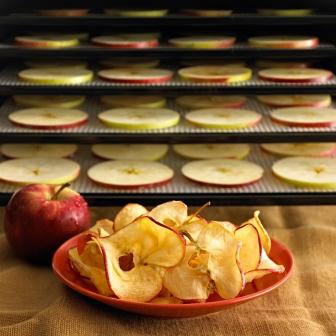 Removal of moisture by applying heat is called “Drying”. Dehydration is drying by artificial heating under controlled temperature, humidity and air flow. The basic drying processes are classified as sun drying, atmospheric dehydration and vacuum dehydration. Sun drying is still in use. These methods are accompanied by removing water. Moisture may be removed from foods by any of the methods.
Removal of moisture by applying heat is called “Drying”. Dehydration is drying by artificial heating under controlled temperature, humidity and air flow. The basic drying processes are classified as sun drying, atmospheric dehydration and vacuum dehydration. Sun drying is still in use. These methods are accompanied by removing water. Moisture may be removed from foods by any of the methods.
Dehydrating (below 5%) moisture helps to preserve nutritive value of the product although heat-labile vitamin losses are more. Low moisture preserved material can be fortified with vitamins under proper storage conditions. The dried products have more shelf life in properly packed and stored.
Retention of nutrients and overall quality is better in modern methods of dehydration such as freeze drying, vacuum drying, osmotic or solar dehydration as there are little changes in physio-chemical composition.
Sun drying of fruits and vegetables is practiced by solar energy widely in tropical and sub tropical regions. In indirect solar drying, the fruits and vegetables are spread on trays, which are kept in a close compartment or cabinet drier. In solar drier, the air is heated by direct sunrays and carried to the drier from bottom and goes out from the top of chimney. The drying conditions are influenced by the temperature and velocity of the air flow. These solar driers may be with chimney or with amber coloured glass. For drying fruits and vegetables at home, the home drier is ideal.
Source: agriinfo







